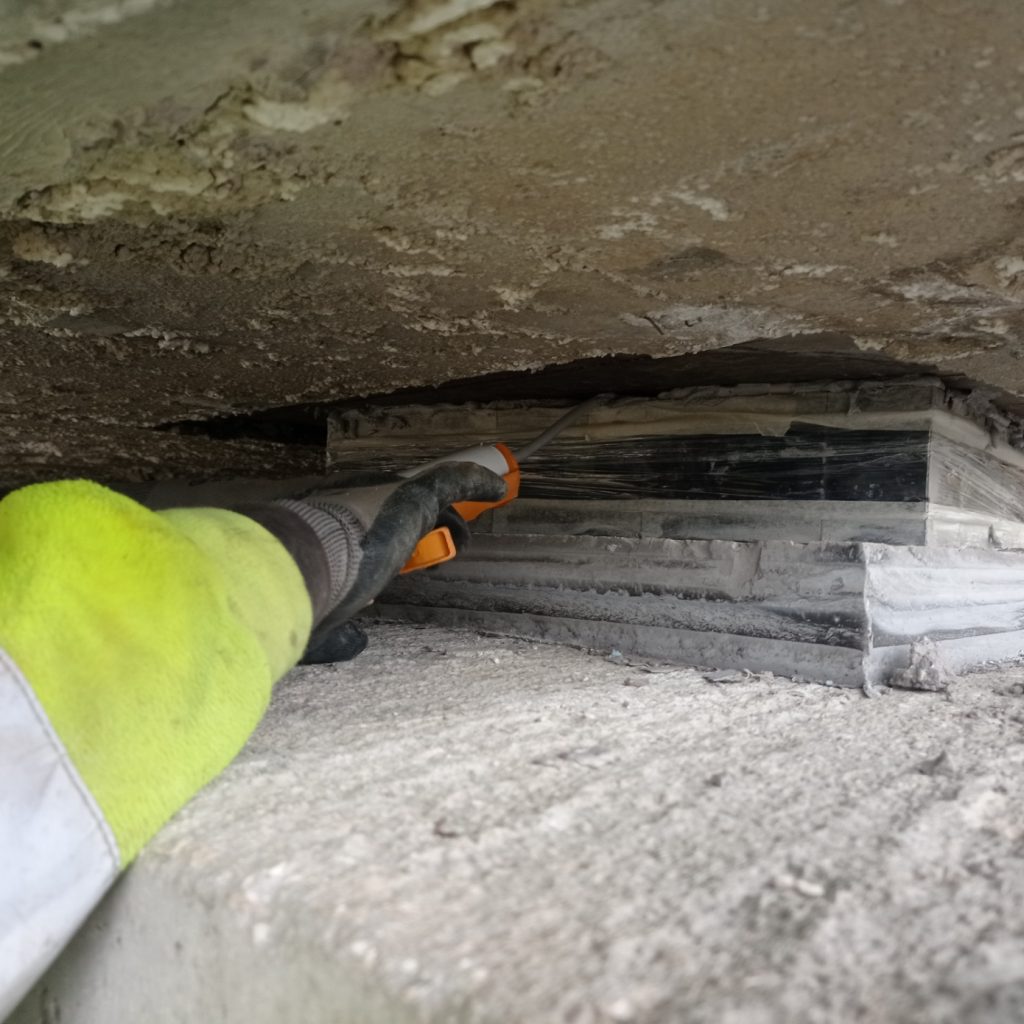A demanding simultaneous jacking and lifting of a bridge erected in mid ’90 has been performed by HiSCS for rehabilitation purposes, among them the replacement of the existing bearings.
The superstructure is an overpass crossing a major highway in Greece connecting the cities of Athens and Korinthos, with prestressed concrete voided slab. The bridge consists of 3 spans with total length 77m (21m+41m+15m), skew angle of 77⁰ and a deck width 11.5m, accommodating two traffic lanes. At both abutments superstructure cantilevers are projected increasing the deck width by 2.5m and 7.5m respectively at both abutments.
The initial design specified elastomeric non-anchored bearing with dimensions 900x900x125mm – 3 pcs in each pier and 600x700x110mm – 2 and 3 pieces in each abutment, while the new design foresees their replacement with new bearings type C (EN-1337-3) with dimensions 350x350x166mm at abutments and 600x700x135mm at piers, anchored with external checkered plates.
The type of superstructure (prestressed) in conjunction with the increased height of new bearings following the new anti-seismic demands, defined the need for a simultaneous jacking & lifting allowing a max differential elevation lifting of 20mm per pier/abutment.
Four (4) jacks of lifting capacity 100 tons/each and 5 jacks of lifting capacity 300 tons/each have been placed in abutments and piers respectively, in total 18 jacks were used. Jacks have been connected through a network of high-pressure hoses and distribution valves in parallel per lifting location.
Prior of lifting all elements obstructing the lifting were disassembled or removed (steel guard rails, expansion joints, abutments sidewalls embedded with the deck, public networks etc.). The existing clearance (gap between the lower part of superstructure and the upper part of pier cap), has been recorded to the order of 100mm, defining the size of the jacks and consequently their stroke capacity, i.e., max 20mm.
The lifting took places in phases of 20mm up to a final elevation of about +80mm from the initial recorded elevation. The final elevation of 80mm was necessary for installing the new bearings being thicker in comparison with the old ones.
The whole process took about 3,5 weeks and the superstructure resettled at an elevation of about +60 mm from its initial recorded considering the thicker new bearings, the need of the construction of new bearing plinths as well as the significant lack of horizontality and levelling of contact surfaces in superstructure.
The lifting team had to deal with the fact that the progressed cantilever in abutment lead to an inclined differential lifting by about 4mm due to extra cantilever weight by adjusting the pressure/force in the jacking system for a uniform lifting. Additionally, the new design requested the orientation of the new bearings to follow the longitudinal axis of superstructure and not the axis of the pier caps. That was another problem for the lifting team trying to relocate the new bearings inside the found recess formed by the embedded to the superstructure of the old bearings due to construction errors.
High strength cementitious mortars have been used for the erection of the new plinths as well as high strength epoxy resins were applied on upper and lower external checkered plates of the new bearings for bonding and friction purposes.
The use of bearings anchored with external checkered plates is a common practice in cases of replacement of old non-mechanically anchored bearings, since the clearance between the superstructure and pier caps/abutments is limited not allowing any installation of anchoring bars/dowels system (old designs without contractual requirement for bearings replacement).


















